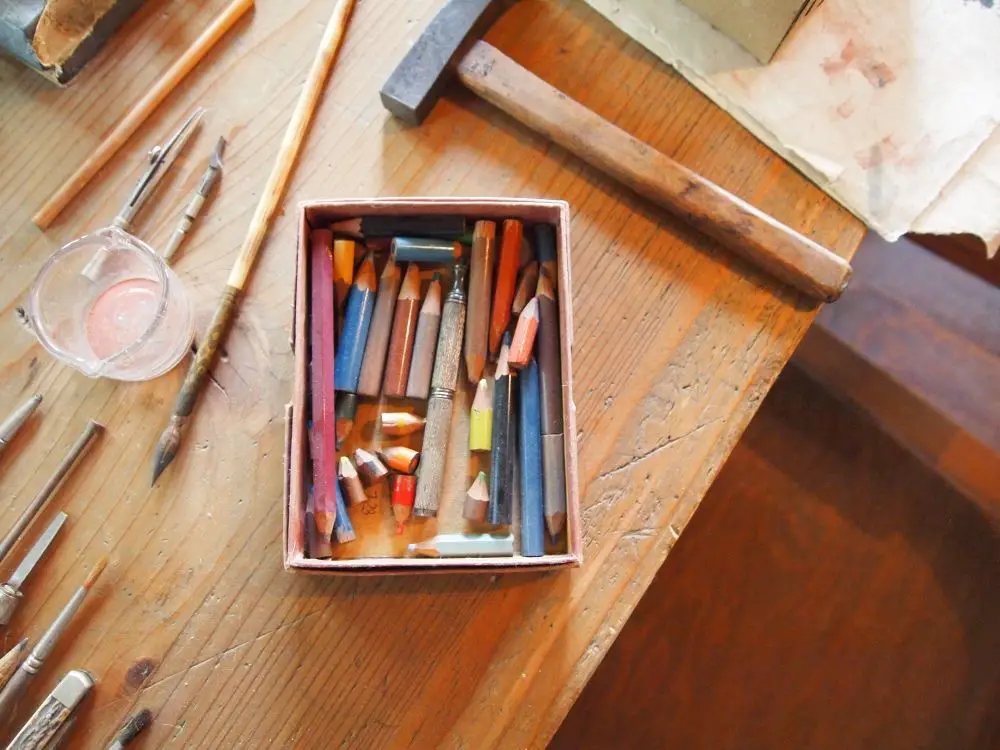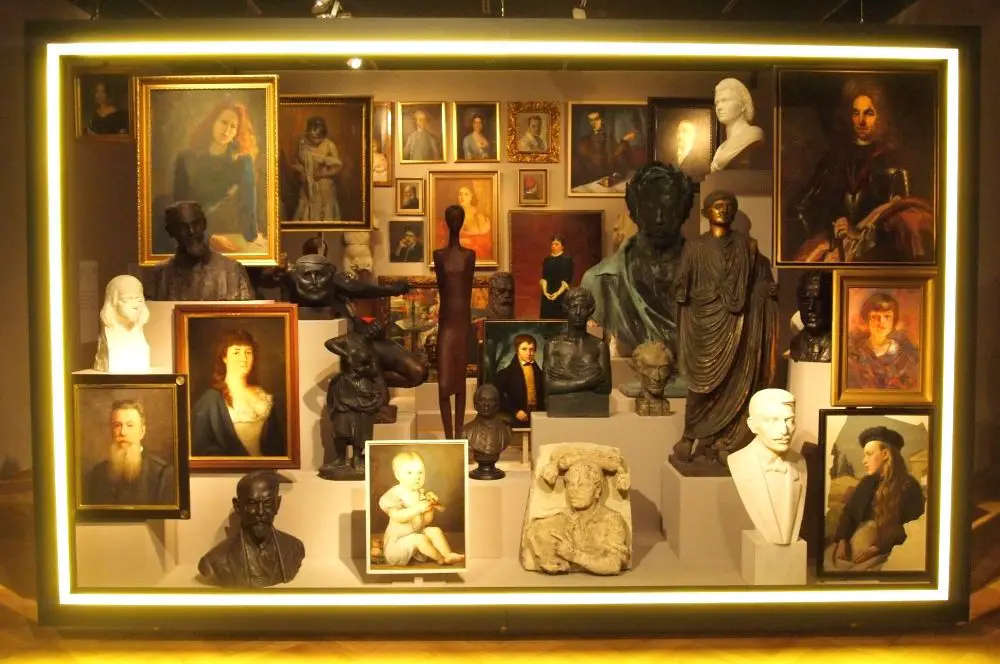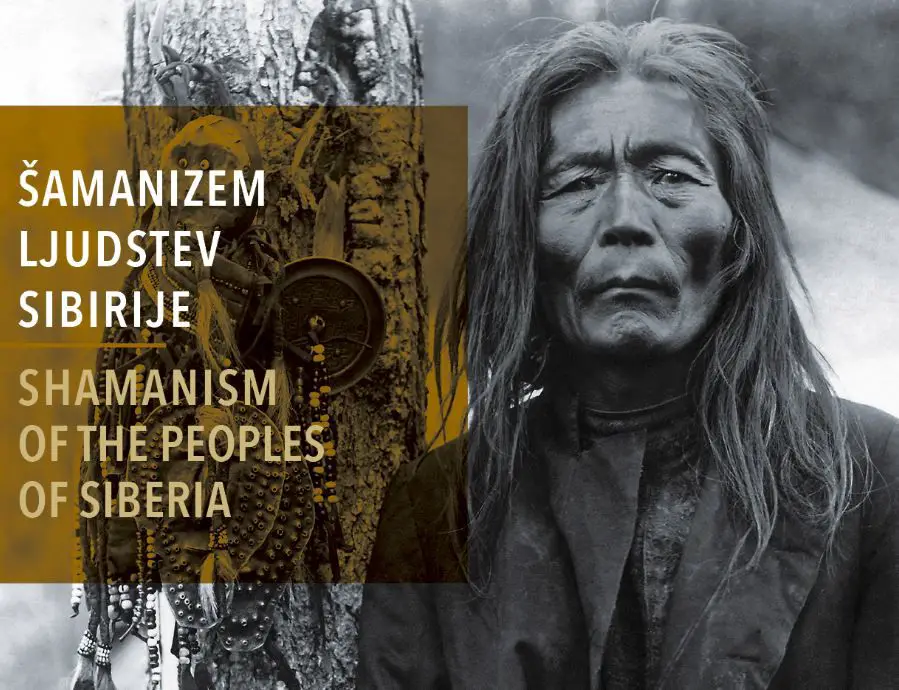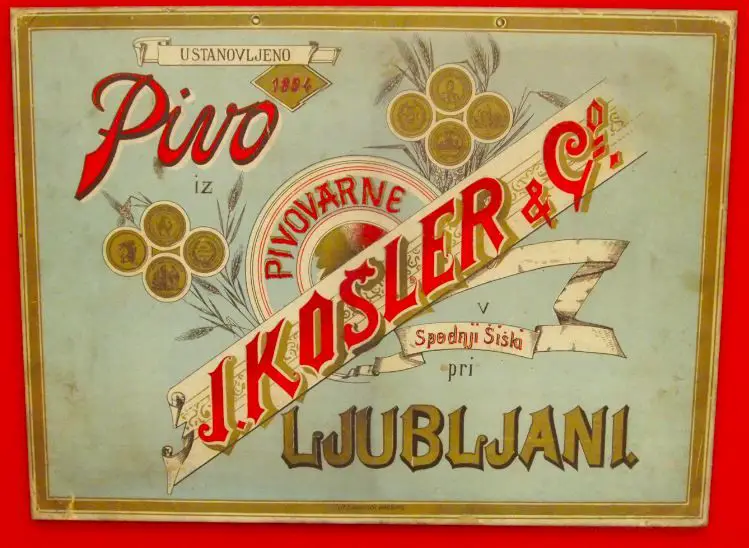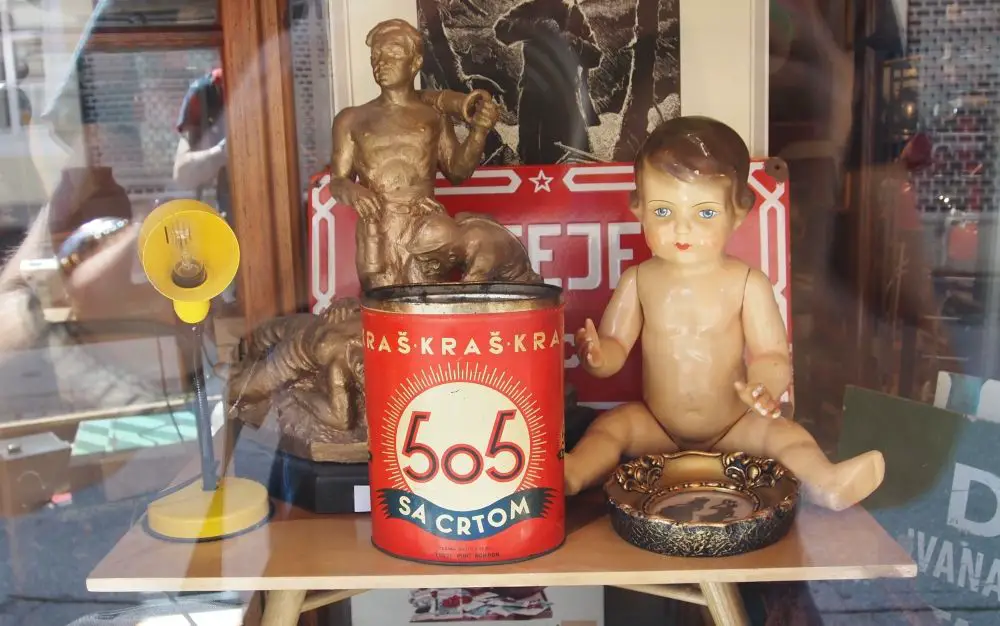News
Bookmark this link and find the headlines faster each morning, or follow us on Facebook
A schedule of all the main events involving Slovenia this week can be found here
Visiting Ljubljana? Check out what's on this week, while all our stories on Slovenia, from newest to oldest, are here
Curious about Bollywood in Slovenia? See some usicla numbers shot in the country here
This summary is provided by the STA:
PM calls for unity in face of "provocations"
LJUBELJ - Prime Minister Marjan Šarec issued a warning about resurgent animosities as he addressed a ceremony marking the 74th anniversary of the liberation of a concentration camp. Mentioning "recent provocations," he said Slovenians did not want conflict, but it was necessary to speak up about such events. "We love our neighbours and we don't want conflict. But we are against individuals in these countries who think differently," he said, noting that it was politicians, not nations that are to blame for such things.
EU Commission expects Slovenia to comply with commitments
LJUBLJANA - The EU Commission said it expected Slovenia to comply with its commitments after Prime Minister Marjan Šarec cast doubt on privatisation of Abanka, saying that Slovenian Sovereign Holding (SSH) should "seriously reconsider continuing the sale of Abanka." While refusing to specifically comment on the statement, a Commission spokesperson said late on Friday the Commission "expects member states to comply with their state aid commitments within the set deadlines."
Slovenia empty-handed in third round of Euro 2020 qualifying
KLAGENFURT, Austria - Slovenia lost 0:1 to Austria in the third round of qualifying for the Euro 2020 in Klagenfurt on Friday, the loss Coming after draws against North Macedonia and Israel. The sole goal for Austria came in the 74th minute, when Slovenian keeper Jan Oblak deflected a shot from Austrian striker Marko Arnautović, only for Guido Burgstaller to chip it in just minutes after coming in as replacement.
If you're learning Slovenian then you can find all our dual texts here
If you're not in town for the week of this guide (10 to 16 June, 2019) then you can see all the editions here, and if there's event or activity you want to promote in a future edition of What's on in Ljubljana please get in touch with me at flanner(at)total-slovenia-news.com or try and find me on Facebook.
As ever, links to the basic listings are after the following selections…
I took a boat ride the other week, and it was great - see a timelapse video of a trip on the same boat, below, and read about it here.
If you prefer to get in the water rather than on it, then here's a guide to the various open air pools in Ljubljana. Note that it was written last year and so the prices and times may have changed, so do click the links and check.
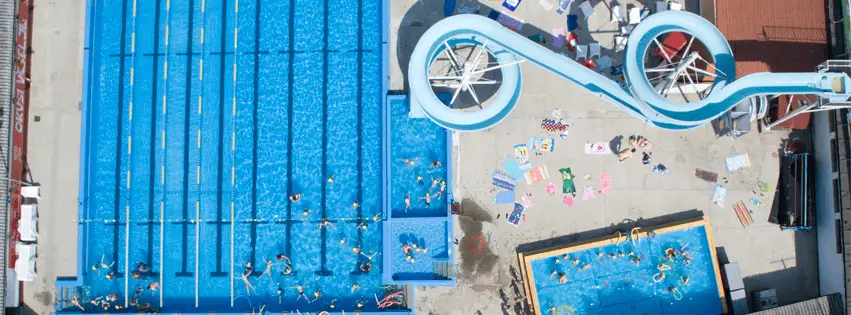
In town and want to follow the news? Check out our regular morning headlines for Slovenia here.
If you're learning Slovenian then you can find all our dual texts here
Lighting Guerrilla will continue to delight after dark at various locations around town until 15 June, so if you see anything strange and lit up, that’s why.
The June in Ljubljana Festival has begun, with free events in Kongresni trg / Congress Square – the big square in the centre of town that’s next to Zvezda Park – with a varied programme of music, dance, children’s shows, and so on. Some details are here.
The Summer in Ljubljana Old Town starts Tuesday and goes on until 28 August. This presents classical concerts, many of which are free, in the churches, inner courtyards and squares in the old city centre. The programme is here.
While the Old Town is quaint, and full of music, where does Ljubljana really shop? One popular answer is BTC City, a vast complex of malls, entertainment facilities and more, including more than 70 different food vendors, offering everything from Slovenian to Thai, Indian to Italian, Mexican to Chinese. Check out my recent visit here.
Ljubljana Pride Festival starts on Tuesday, 11 June, and continues until the 22nd. There’s a lot going on, and you can see the schedule here.
Tuesday, 16:00-19:30, the 58th Ljubljana Comics Bazaar will again take over Kino Šiška, with something for all comics nostalgists and collectors, with second-hand classics t more recent comics releases. If this appeals, then also note the Alan Ford show at the National Gallery (see later in this guide).
Every Saturday through the summer are two art markets. ARTish is in Gornji trg square, the far end of the Old Town, where you can buy works from Slovenian artists (09:00 – 18:00). Around the same time, but ending 16:00, there are more local artists along the nearby Breg Embankment, on the other side of the river, under the banner of the Ljubljana Art Market. (While Sunday mornings, same location, see the regular flea / antique market. There's also the famed food market Open Kitchen, every Friday 10:00 to 21:00 in the central market - it's lively, with a good mix of locals and visitors, and even if you're not hungry you'll enjoy it (but go hungry).
Volčji Potok Arboretum (Volčji Potok 3) has a rose garden in bloom until 31 August, nature permitting.
- Cinemas and films
- Clubbing
- Live music
- Theatre and dance
- Harm reduction and drug testing
- Things to do with children
- LGBT+ Ljubljana
- Ljubljana Castle
- Museums and galleries
- Other things to do in Ljubljana
- Daytrips
- Getting around & miscellaneous
Cinemas and films
You can read about all the cinemas in town here, while a selection of what’s playing this week is below, and note that kids' movies tend to be shown in dubbed versions, while non-English language movies for older viewers will have Slovenian subtitles.Parents should also pay attention to Kinobalon, which is Kinodvor's regular weekend series of film screenings and events for children, from babies on up, with special parent/child events, "first time in a cinema" screenings, and babysitting. Learn more about it here, and see the current schedule here.
Kinodvor –This is an arts cinema, not far from the train station, that shows new features as well as hosting the occassional festival, and this week, starting the 13th, it's the Let it Roll festival of music documentaries.
Kinoteka – And not far from Kinodvor you can find this revival cinema, which shows art house classics along with some deep dives in the archives.
Kino Bežigrad - A relatively small theatre, but one which usually has the biggest of the new releases.
Kolosej -The multiplex out at BTC City Mall shows all the big movies, with well over a dozen titles on the schedule, although note that there are far more movies than screens, so some of the older ones mayonly be playing once or twice a week.
Komuna – The cinema in a basement behind Nama department store shows two or three different features a week, usually including the biggest titles.
Clubbing
Compared to some European capitals it can seem that nightlife in Ljubljana ends rather early, especially along the river, but there are still bars that stay open late and clubs were you can dance until dawn, and perhaps the best place to stumble across something interesting is the legendary Metelkova. Be aware it's a grungy kind of place and not for all tastes, but also that there's considerable variety to found within the various clubs there, from death metal to electropop, gay cabaret to art noise. You can read "the rules" of the place here. And if you're curious about how the place started then read our story, and look at some pictures, about last year's 25th anniversary.
Božidar - DJ events aren't too common here, but when they happen they often have a big name.
Channel Zero – DJs shows here include regular dub nights as well as electronic music.
Gala Hala – Another Metelkova venue, you can sometimes hear bhangra and Bollywood here, but more often funk, hip hop, breakbeat and so on.
Klub Cirkus – The more commercial end of clubland, and a venue that aims to serve the student party scene. Expect house, anthems, and bangers.
Klub K4 – The home of techno, old and new, along with various other electronic genres,
Koncertna Dvorana Rog– There are irregular DJ sets at this underground (not literally) venue at the far end of Trubarjeva cesta, and they range from techno to goa to drum'n'bass.
Orto Bar– 80s and 90s throwback nights can often be found here, along with rock-based DJ sets.
Live music
Balassi Institute – Free Hungarian music, when available, from the Hungarian cultural institute just a short walk downriver from Dragon Bridge.
Cankerjev dom – The main arts venue in the country hosts classical, opera jazz, folk and occassinally pop.
Cvetličarna – Regional pop and rock concerts can be found here.
Channel Zero – This Metelkova venue sees live shows from punk and rock bands, as well as others.
Gala Hala – Another Metelkova venue with indie bands of various styles.
Kino Šiška – One of the top live venues in the city, with a varied programme that include indie, rock, pop, experimental, hip hop, and so on.
Klub Gromka – Live music is often metal, from sludge to stoner, death to thrash, while punk bands also appear, as do others.
Križanke – The venue that hosts the Ljubljana Festival often has classical music, and some rock, in the open air.
Ljubljana Castle – Jazz, funk and pop every Friday night.
Orto Bar– The home of live rock, metal, punk and other guitar-based genres.
Pinelina dnevna soba – LIve music is rare here, but it does happen.
Slovenska filharmonija– Classical music in the centre of town.
SNG Opera and Ballet - As the name suggests, here you'll find the best of opera and ballet in the country.
Španski borci - While dance is more common here, they also have some contemporary and experimental music shows.
Theatre and dance
Cankerjev dom- The main arts venue in the country always has something of interest going on.
Gledališče IGLU - IGLU Theatre – Saturday night this group is usually putting on an English improv show somewhere in town, but it’s generally promoted after this is written, so check the Facebook before putting on your shoes.
Kino Šiška – One of the top live venues in the city also hosts some dance performance, often of the more experimental variety.
Mini Teater Ljubljana –The English schedule of varied performances, for adults and children, for the month is here.
Ljubljana Puppet Theatre - Puppetry has a long and noble tradition in Slovenia, and you can see performances for children and adults (including non-puppet shows) drawing from the Theatre's rich repetoire as well as new productons.
SNG Opera and Ballet - As the name suggests, here you'll find the best of opera and ballet in the country.
Španski borci - The home ofcontemporary dance(and the EnKnapGroup) in Slovenia.
Pocket Teater Studio– There are regular flamenco evenings at perhaps the smallest venue town, but note that the number of seats is very limited, and thus you should make a reservation via This email address is being protected from spambots. You need JavaScript enabled to view it. or 070 325 522.
Harm reduction and drug testing
Drogart is an organization that aims to minimise harm on the party scene, and offers drug-testing services and reports on their webpage. It’s in Slovene, but you can Google translate it or work things out yourself, and our story on the group is here.You can find the latest warnings on fake drugs and high strength pills and powders (in Slovene) here. However, be aware that all the usual drugs are illegal in Slovenia.CBD is legal, though, and our retailer of choice can be found on Trubarjeva cesta - read more about Sena Flora here.
Things to do with children
You can find our Top 12 list of things to do with kids in Ljubljana here. If want to read more about the philosophy behind the wonderful House of Experiments look here, while our trip to the Museum of Illusions is documented here, and there’s always riverside walks, pizza and ice cream. With regard to the latter, take a look at our guide to six places that serve good ice cream in winter, and thus are serious about the dessert.
Mini Teater Ljubljana – The season sees a lot of puppet performances for children, in Slovene, at this theatre not far from Križanke. The English schedule for the month is here.
Ljubljana Puppet Theatre - The puppet theatre near the Central Market and next to the Castle funicular has a full programme or shows, for children and adults, with the schedule here.
LGBT+ Ljubljana
Ljubljana Pride Festival starts on Tuesday, 11 June, and continues until the 22nd. There’s a lot going on, and you can see the schedule here.
If you want to learn more about Ljubljana Pride, then take a look at our interview with its president here. If you're looking for more general links on "gay Slovenia", including a history of the scene and various projects, then you can find that here, while our stories about the community can be found here.
Klub Monokel – Thislesbian barin Metelkova is open every Friday, although sometimes there are other events
Klub Tiffany –And the gay bar next door is also open on Fridays, while every Monday until June 2019 there'stangoat 18:00. Other things coulds also be planned, so click on the name to find out.
Pritličje – This seems to be the only "always open" LGBT-friendly cafe / bar / events space in town, and perhaps the country, so it's a good thing it's such a good one, open from morning to night, and with fliers and posters letting you know what's happening outside the narrow confines of, say, a general interest online what's on... guide.
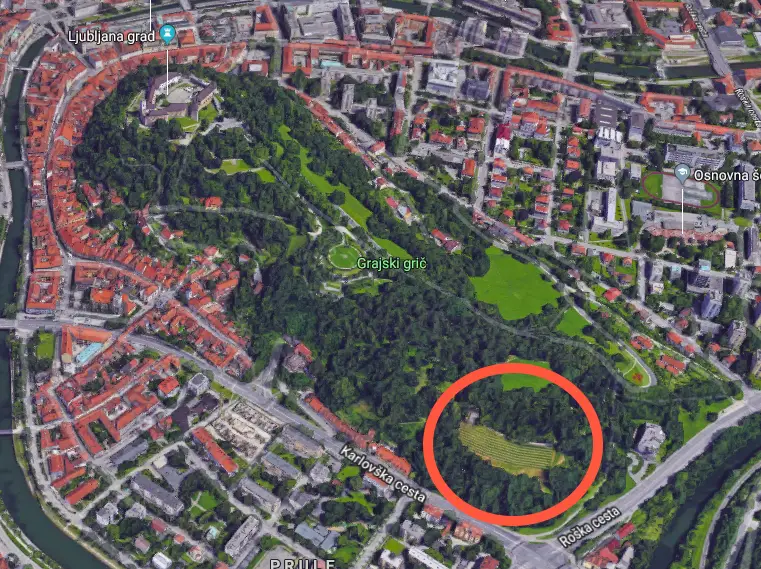
Screenshot from Google Maps, showing the location of the Castle vineyard
Ljubljana Castle
The city’s main attraction is said to be the top tourist draw in the country overall, and to my mind it earns a spot near the top just for the history and views. But beyond that the current owners, the City of Ljubljana, have laid out a varied, interesting and enjoyable programme of events, one that rewards regular revisits. On until 17 November Mighty Guardians of the Past: Castles in the Slovenian Lands, a presentation that delivers on the promise of its title.
I try and get up there every Saturday morning to clear my head and move my feet on the trails, and never tire of that end of the hill. At the other end, where the Castle sits, there’s a lot more than fresh air on offer. There are guided tours, restaurants, a café, Castle museum, puppet museum, a Watchtower you can climb to the highest point in the city, art shows, dances, live music, movies under the stars, festival days and more – enough to reward multiple trips up the hill through the year. All of these activities and events can be found on the Castle website, while on TSN you can see “25 things to know about Ljubljana Castle” here, and “Ten Ways to Enjoy Ljubljana Castle” here.
Museums and galleries
Most public galleries and museums are closed on Mondays, although not the National Museum, and - as noted at the start
Cankerjev dom – A free to see show called Subterranean Worlds, showing cave photography, runs until June 16th.
Plečnik's desk. Photo: JL Flanner
Plečnik’s House is worth a visit if you want to learn more about the architect who gave Ljubljana much of its character, and it's also in a really nice part of town, Trnovo, just a short walk or cycle upriver. Read about our guided tour here.
Balassi Institute – The Hungarian culture centre hasInterlacement – exhibition of Éva Farkasvölgyi and Žiga Okorn, showing tapestries and paintings on until June 14th.Free to enter, this venue is next to a Spar and Hofer, and not far from Dragon Bridge, and always has something interesting going on. Learn more here.
City Museum – The Museum in French Revolution Square an interesting permanent exhibition on the history of Ljubljana, from prehistoric times to the present day, with many artefacts, models and so on that bring the story alive.You can read about my visit here. On until 25 September is Treasures from Russian Museums, an exhibition showcasing more than 80 Russian icons from leading Russian museums.
The Faces of Ljubljana in the City Museum. Photo: JL Flanner
International Centre of Graphic Art – The 33rd Biennial of Graphic Arts runs until 29 September. It's called Crack Up – Crack Down, and is curated by the collective Slavs and Tartars, with a focus satire and the graphic arts. Learn more here.
Ljubljana Castle on until 17 November Mighty Guardians of the Past: Castles in the Slovenian Lands, a presentation that delivers on the promise of its title.
MAO – The Museum of Architecture and Design has much of what you'd expect, along with some temporary shows and a good cafe. On until 19 September is a show called Creators, on contemporary Slovenian fashion and textile design, which is being promoted with the following image.
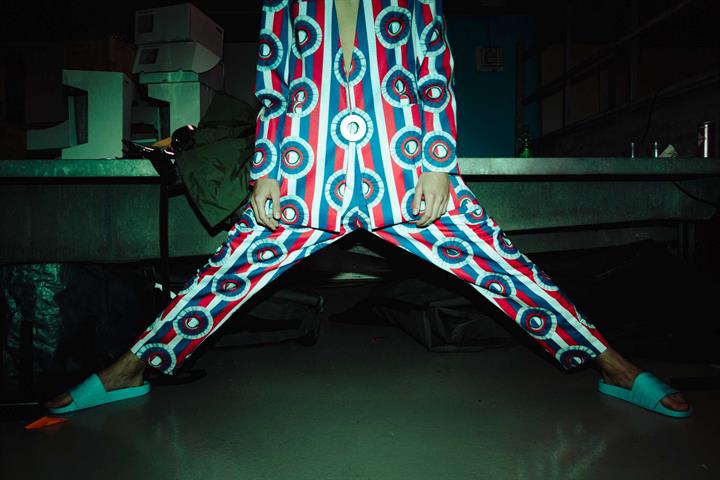
Photo: Urša Premik
Moderna galerija – The main branch of this gallery, to be found near the entrance to Tivoli Park, has a good collection of modern art, as well a nice café in the basement. Opening Thursday, April 25th, 20:00, The Visual Arts in the Kingdom of Yugoslavia, 1929–1941, which then runs until September 15th 2019. This offers “an overview of painting, sculpture, printmaking, drawing, photography, and film from the time the king's dictatorship was set up (6 January 1929) to the beginning of World War II on Yugoslav soil (April 1941)” - you can read more about it here. The museum's Metelkova branch also has a big new show, runing until at least September 2019, an the art of the Non-Aligned Movement, with an example shown below.
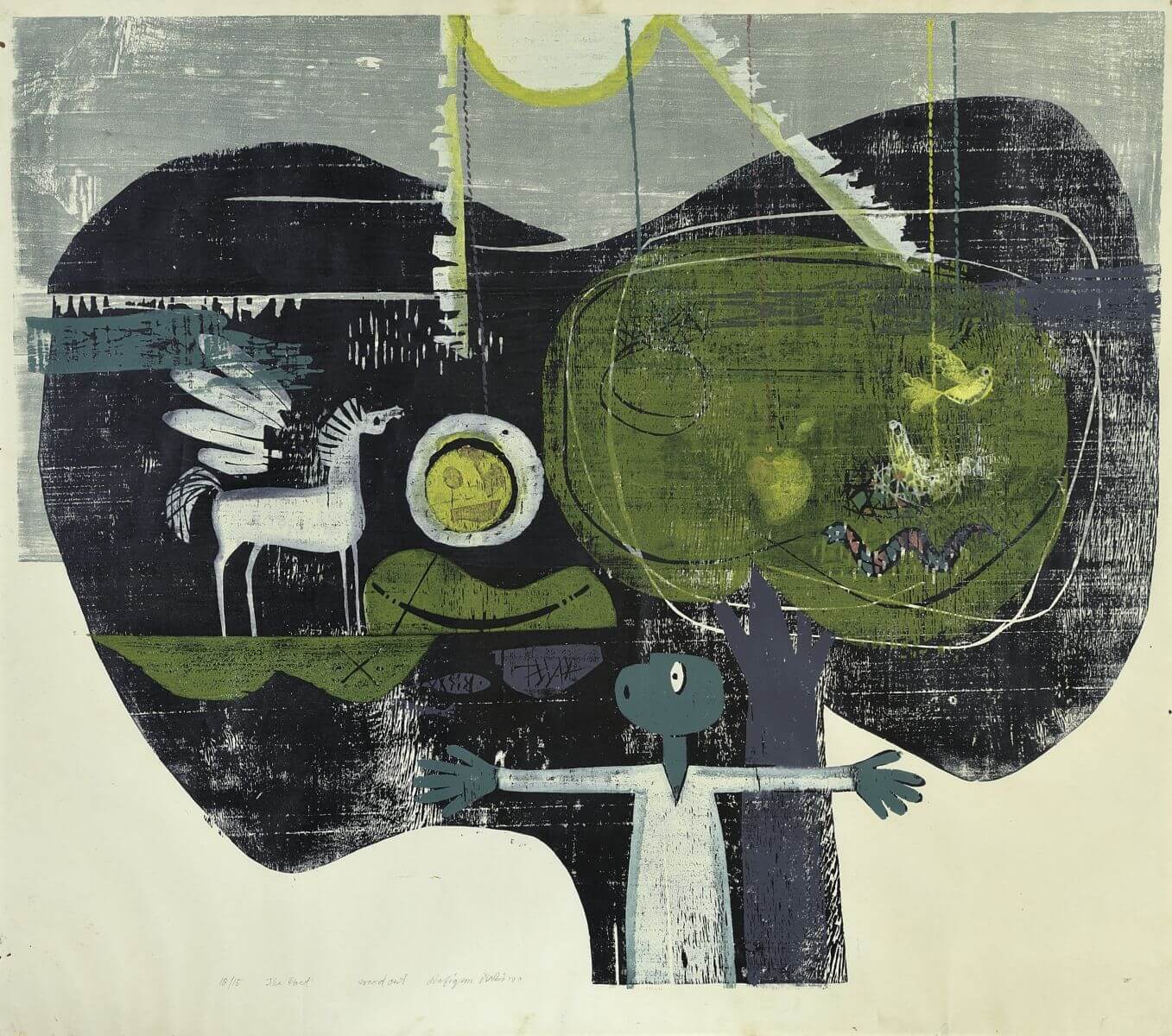
Rafikun Nabi: Poet, 1980, print, 96.5 x 110 cm. Courtesy of the Contemporary Art Center of Montenegro. On display at the Metelova branch of the Moderna galerija
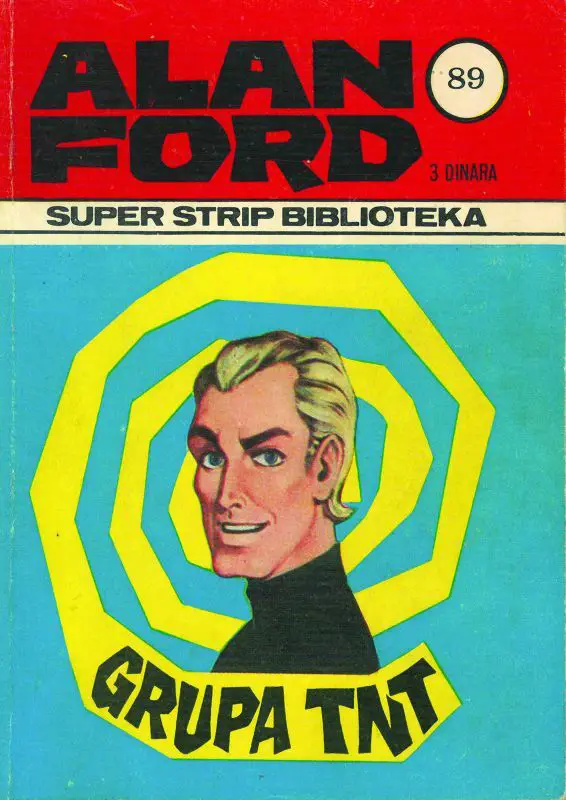
Alan Ford at the National Gallery
National Gallery – The country’s main gallery has “the best” of what’s on offer from the Middle Ages to non-contemporary modern visual arts, and is in a great location for exploring other areas, just by Tivoli Park and opposite the main branch of the Moderna galerija. You can read about our visit to the room containing sacred art from the Middle Ages here. The Space Within the Space: Scenography in Slovenia before 1991 will provide a comprehensive historic, stylistic, visual and theatrical overview of Slovenian scenography until 8 September. There’s also a big show on Alan Ford, one of the great comic books of the Yugoslav era, on until 13 October.
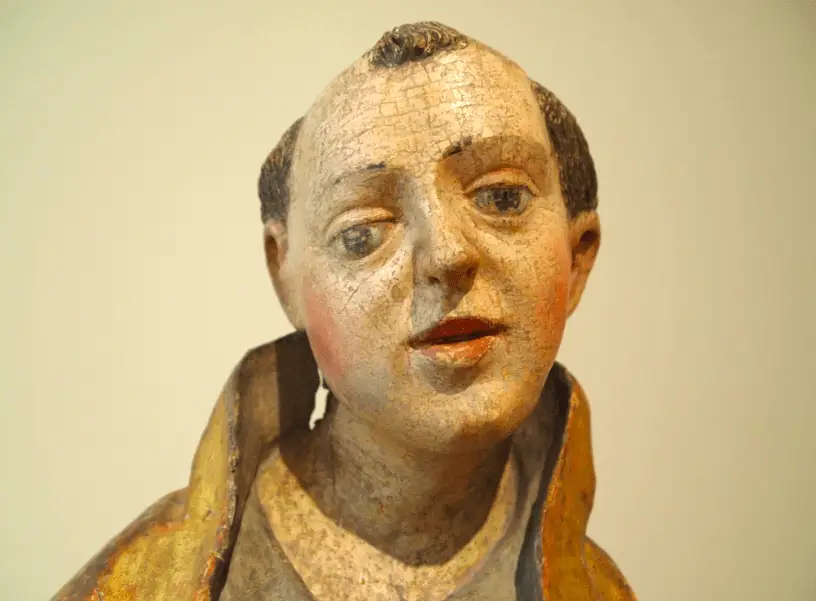
JL Flanner
The real Robba Fountain can be found in the entrance to the National Gallery - the one you see in the Old Town is a genuine fake, as seen below and reported here.
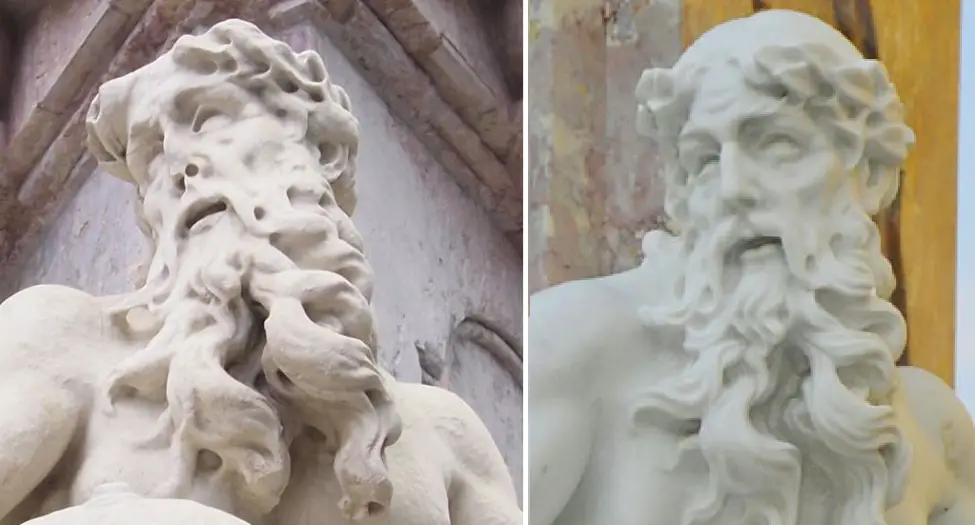
Photo: JL Flanner
National Museum of Slovenia – There’s plenty to see in the permanent collection here, from Roman times, Egypt and more. Meanwhile, the museum's Metelkova branch, located between one branch of the Moderna galerija and the Ethnographic Museum has some rooms on Church art, furniture and weapons, with the latter including more guns than you'll see anywhere else in town, and quite a thrill if coming from a nation where such objects are not household items.
Natural History Museum – On until the end of June 2019 is Our Little Big Sea, which takes a look at the oceans.
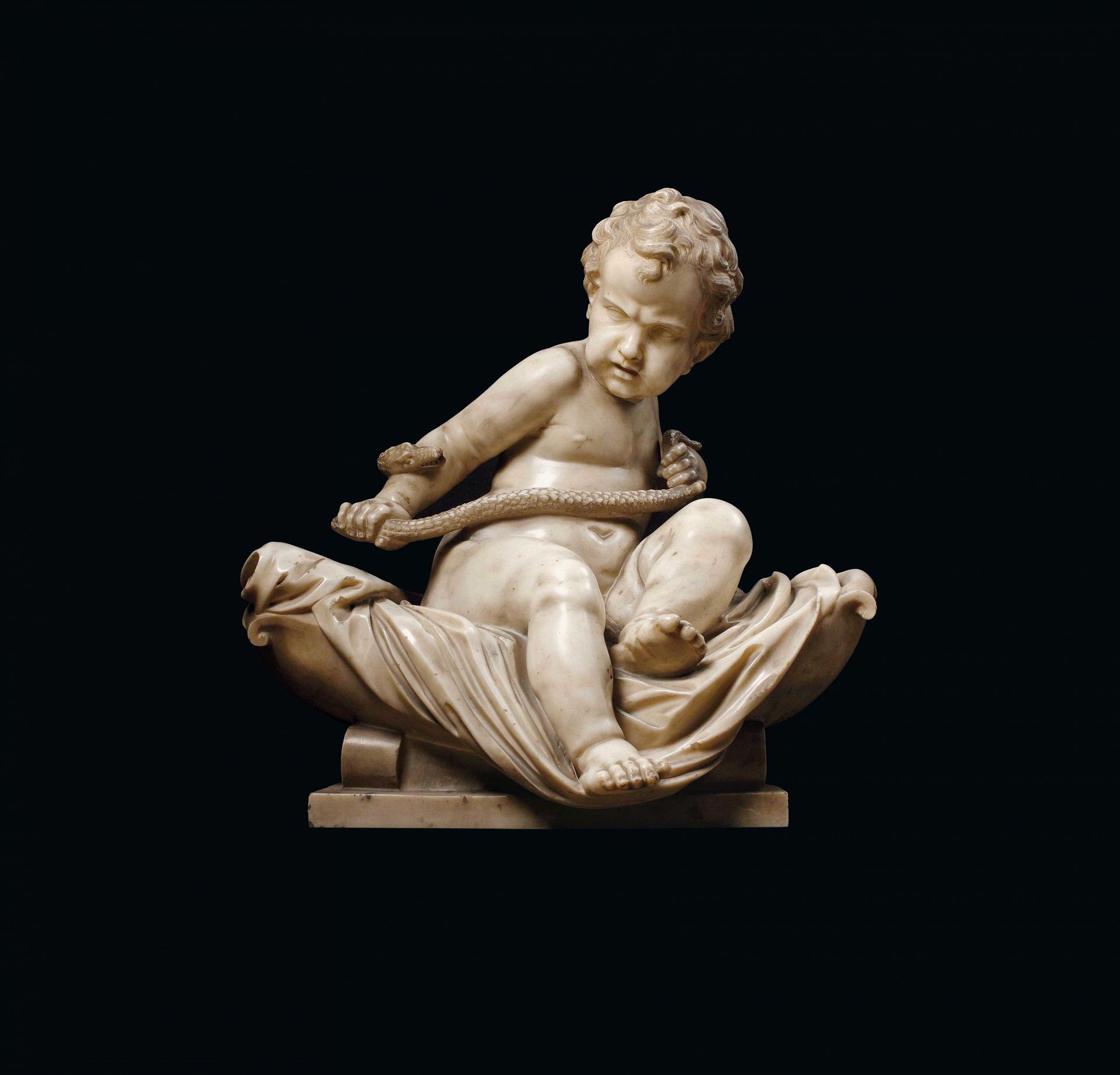
Roma Aeterna: Masterpieces of Classical Sculpture - see below
National Museum of Contemporary History - Tucked away in park Tivoli, in addition to his permanent collection will be showingIn Search Of Freedom: 1968-2018 until 16 August. Until 29 September there also a retrospective on the photographer Edi Šelhaus, which is being promoted with the following image. Opening 4 June and closing 3 November is Roma Aeterna: Masterpieces of Classical Sculpture. With sculptures from the collection of the Santarelli family in Rome, ranging from the age of the Roman Empire to that of neoclassicism.
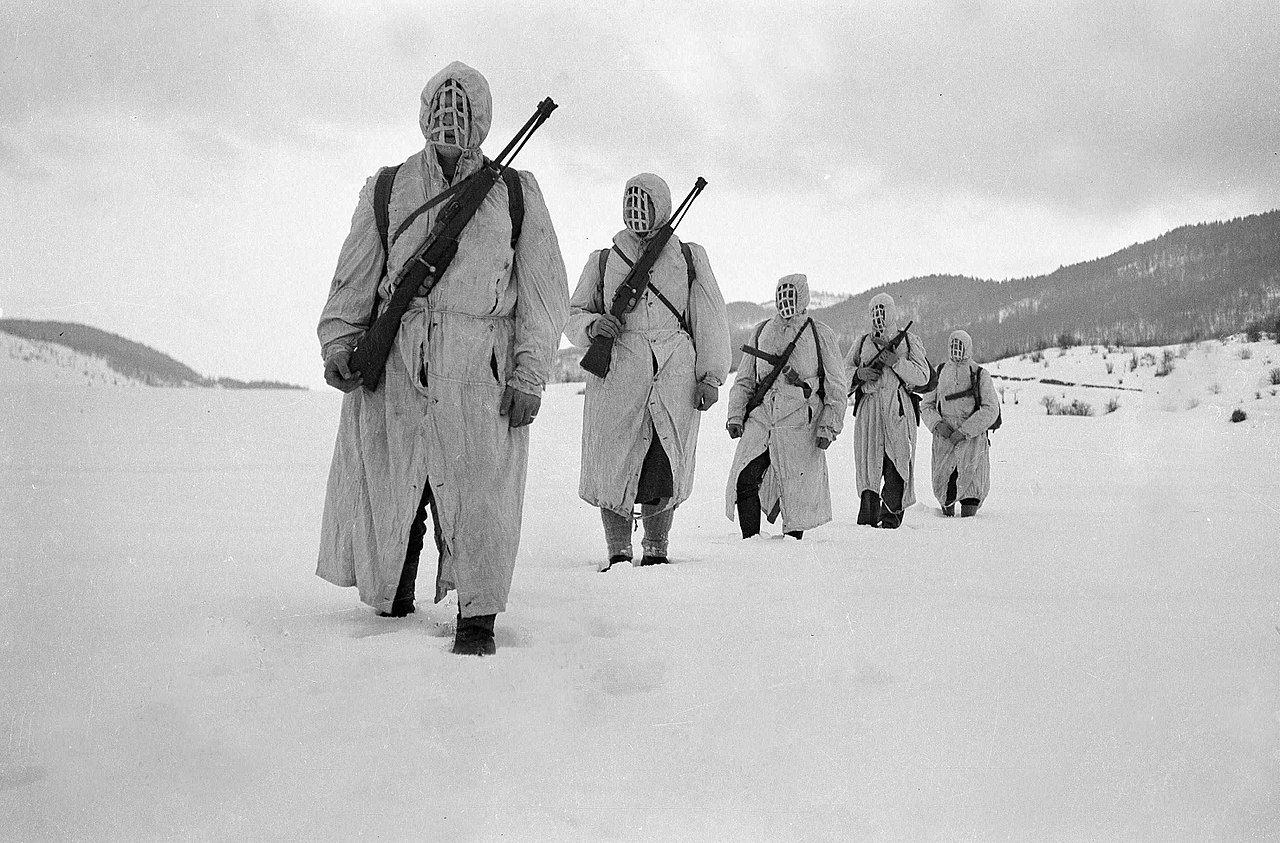
Photo: Edi Šelhaus
Slovene Ethnographic Museum – The museum currently has a temporary show on Bees and Beekeeping, on until June 16 2019, as well two permanent exhibitions. One of these is called Between Nature and Culture, and has a great collection of objects from Slovenia and around the world, well worth the trip up to the third floor to see it (as recounted here). From April 18 until October 19 (2019) you can also see a show calledShamanism of the Peoples of Siberia, from the Russian Museum of Ethnography, Saint Petersburg. The place is located near the newer branch of the Moderna galerija and Metelkova. You can read about this fascinating show here. On until September 15 is Petra Šink: The circle between design and nature, in which the award-winning designer takes visitors through the life cycle of useful products for the home which are made from natural biodegradable fungal materials.
Union is "the Ljubljana beer", but now both it and Laško are owned by Heineken. There are many local brews on offer around town, though, if you want to explore IPAs, stouts, wheatbeers, sours and so on Photo: JL Flanner
Union Experience – The Ljubljana-based brewer has a museum showing the history of the company, with the ticket also including access to part of the factory and a few samples of the product. You can read about our visit here.
Volčji Potok Arboretum - Running until 3 November you can see a large collection of cacti here.
It's not a formal museum, but if you're interested in "Yugo-stalgia" then you'll enjoy a trip to Verba, a small, privately run space that's crammed with objects and pop culture items from the era, and is conveniently located at the start of one of the short walks to the castle. It's also a great place to take pictures, if you leave a donation, and you can read more about it here.
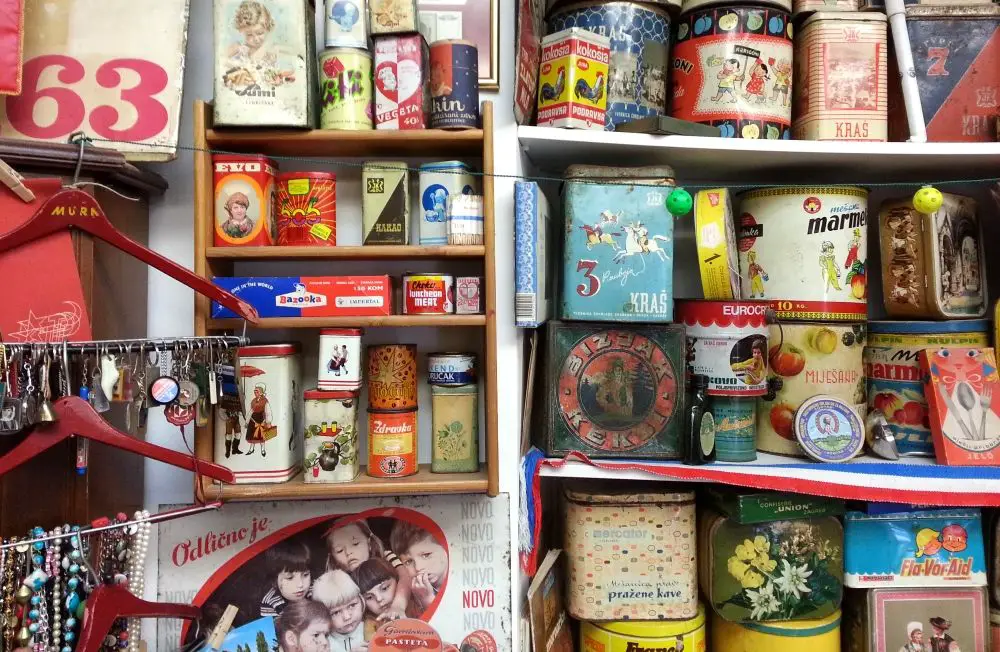
Verba. Photo: JL Flanner
Alternative Ljubljana isn't a museum or gallery, as such, but instead turns the city streets into a museum and gallery. Learn more about their tours of street art, history and LGBT Ljubljana here.
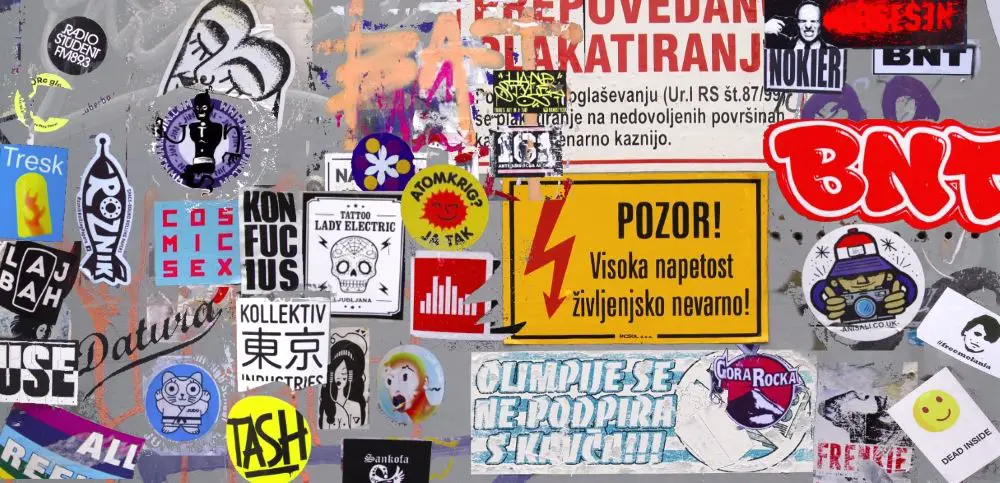
Photo: JL Flanner
Other things to do in Ljubljana
Learn more about Ljubljana with "25 things to know about Slovenia's green city of dragons", or take a look at our guide to spending from four to 48 hours here.
Open Kitchen brings market stalls selling food and drink from some of the best restaurants in town every Friday, from 11am to 11pm, in the square between the cathedral and the river - just follow your nose and the crowds. Read more about it here.
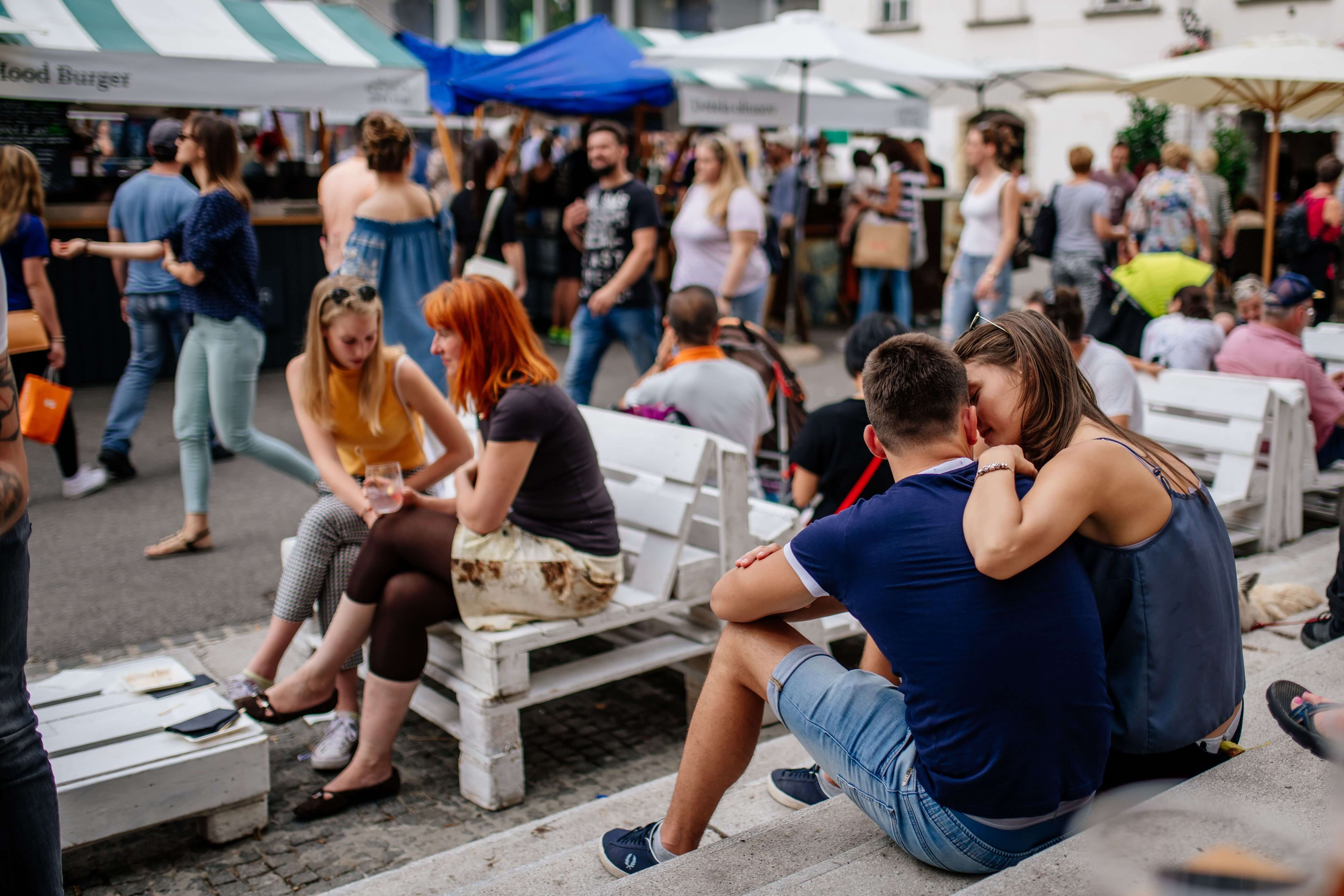
Photo: Open Kitchen
If you'd like to spend an evening painting with others, then take a look at Design with Wine, which organises painting parties on Trubarjeva cesta,
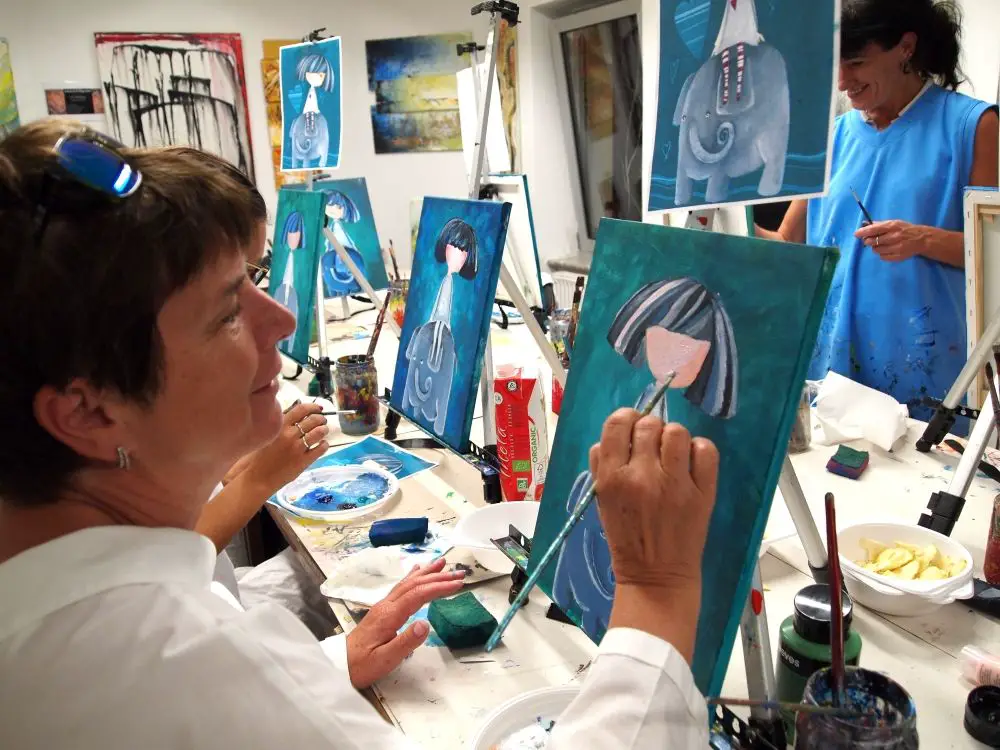
If you want to see some antiques, then check out the wonderful Antika Carniola, as discussed here. The man behind it, Jaka Prijatelj, has a fine eye for life on this street, as you can see on his Facebook account.
Photo: JL Flanner
If you’re in town and want to go jogging or walking in nature, why not take another look at the Castle, with a brief guide to the trails here. If you want something bigger, head to Tivoli Park.
And if you're bored with the Old Town, why not take a walk, cycle or boat ride to nearby Špica and enjoy the riverside life. Learn more about that here.
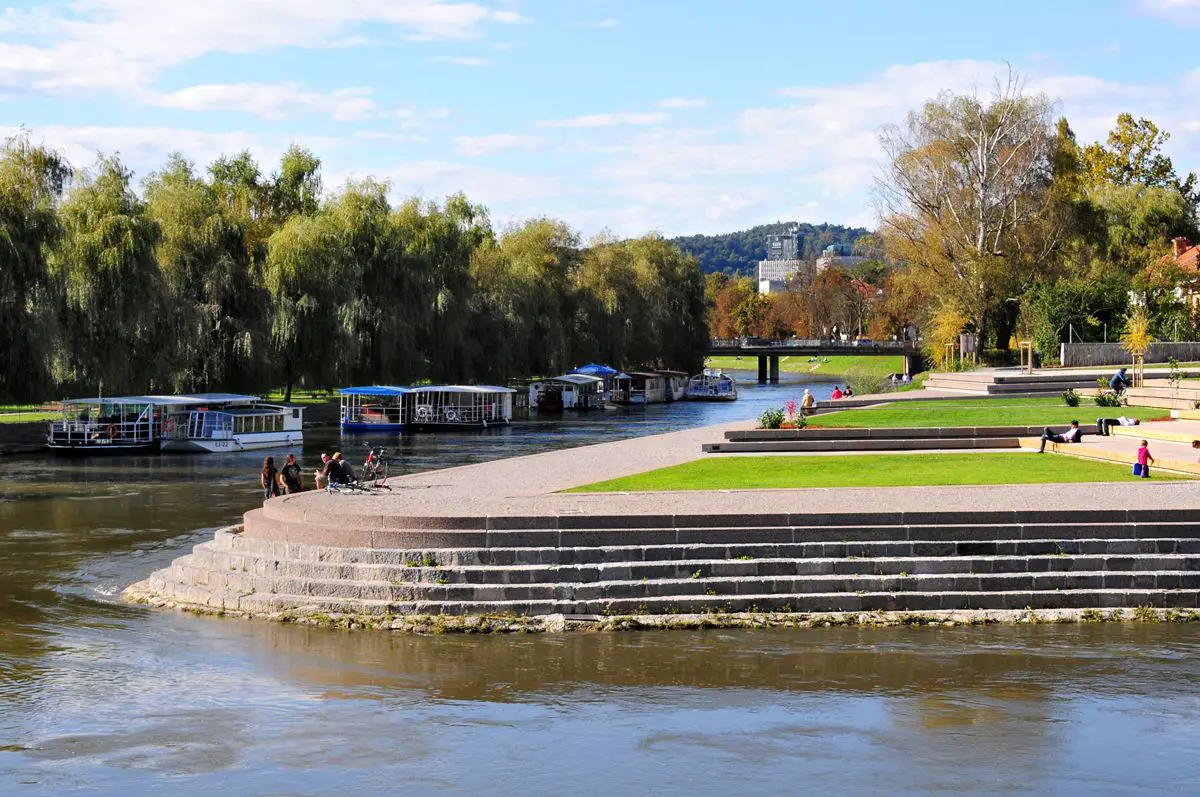
visitljubjana.si
![]()
maxpixel.net, public domain
Want to stretch and breath? Then check out our list of drop-in yoga classes for tourists, visitors and the uncommitted. If you're heading to the coast, check out our interview with a yoga teacher who offers breakfast sessions there, while if you're staying in town (or nearby) and want to try some "family yoga" then you can learn more about that here and maybe get your kids to calm down a moment or two.
Prefer to have someone else stretch you? The check out the totally legit massages you can get from Sense Wellness - either in one of their spas or in you home, office or hotel. (And - to repeat - these are legit and non-sexual in nature)
There are some golf courses near Ljubljana, but even ones further away are not far, as seen in our list of all the golf courses in Slovenia.
![]()
Photo: maxpixel.net, public domain
Daytrips
Most of Slovenia is only a few hours from Ljubljana, and you can easily visit Lake Bled, Lipica Stud Farm, Postojna Cave, Predjama Castle, the coast and other locations, while if you'd like to take a photo of from that bench in Bled, then you can learn how to get there here. If you’re looking for something more ambitious, then check out our recent guide to the 17 members of the Association of Historical Towns of Slovenia. We've also written guides on spending from four to 48 hours in Bled and Piran.
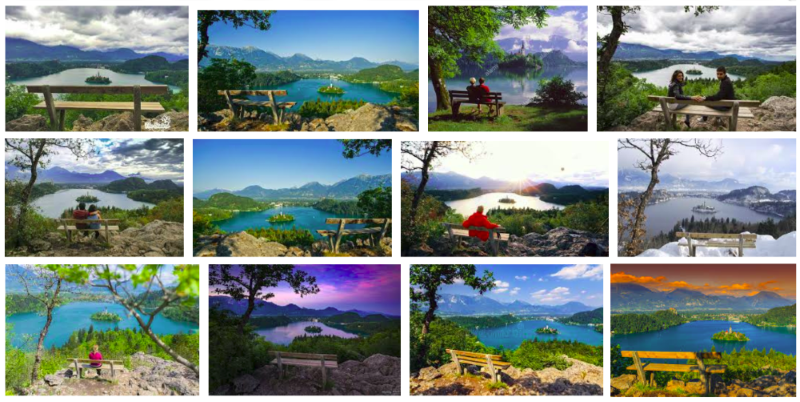
Photo: Google Image Search
Getting around & miscellaneous
If you want to get a Ljubljana Tourist Card, which gives you travel on the city buses and entry to a lot of attractions, then you can read more about that here, and if you want to use the bike share system, as useful for visitors as it is for residents, then you can learn more by clicking this. Visitors with reduced mobility will be pleased to find that downtown Ljubljana is generally rated as good with regard to accessibility, and that there’s a free, city-sponsored app called Ljubljana by Wheelchair highlighting cafés, attractions and so on with ramps, disabled bathrooms and Eurokey facilities, which you can read about and download here. Manual wheelchair users can also borrow, for free, an attachment that will motorise their equipment, as reported here.
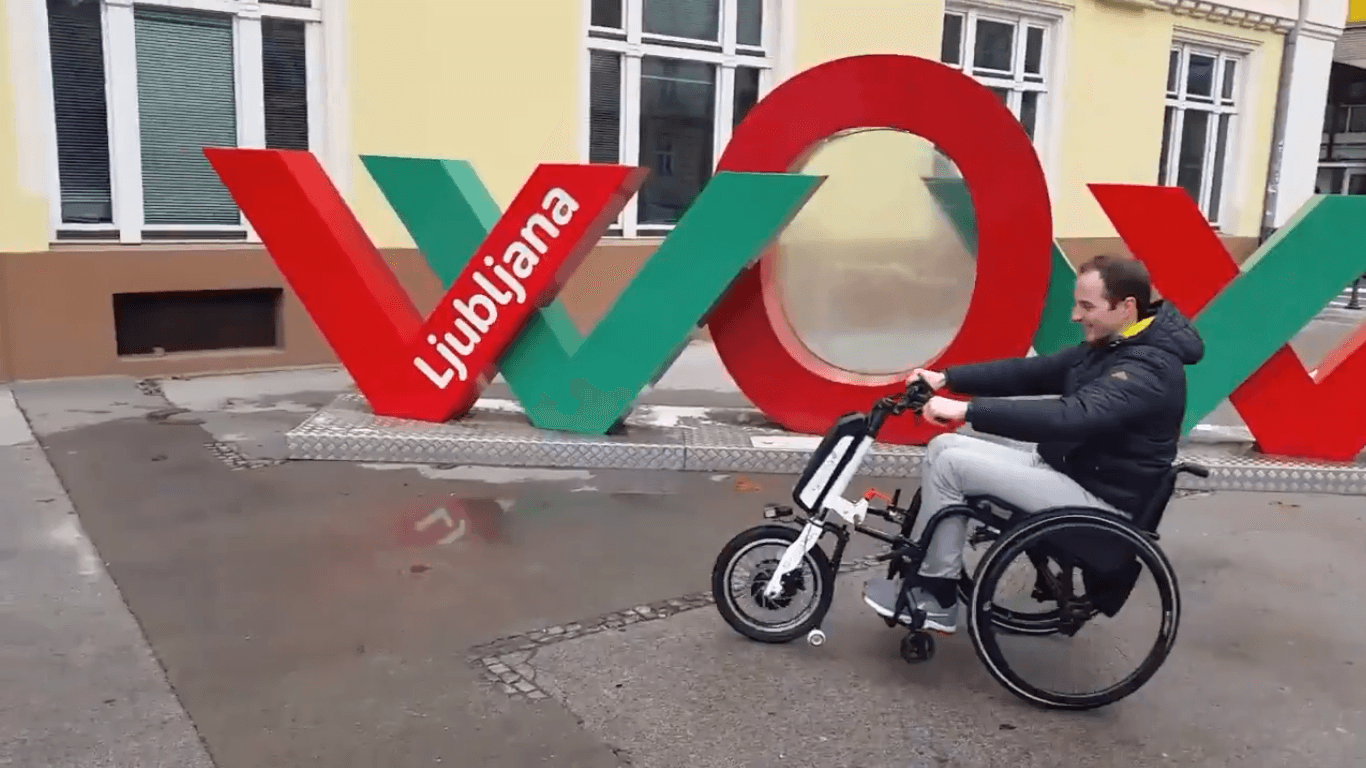
Screenshot from a Twitter video
If you’re driving into town and don’t know where to part, our guide to how to park in Ljubljana is here.
There aren't many places to eat after midnight, and most of them are by the train station, as reported here.
Want / need cigarettes but the stores have closed? Here's an incomplete list of bars downtown that will satisfy your craving for the demon weed. While if you’re having trouble with the ATMs then here’s a guide to the Slovene you’ll see on screen. If you get a hangover then find out where to get paracetamol (and prescription drugs) in Ljubljana here, while details on emergency birth control can be found here.
Ljubljana is a small and relatively safe city, but if need to contact the police then there’s a special number for foreigners, and that’s 113.
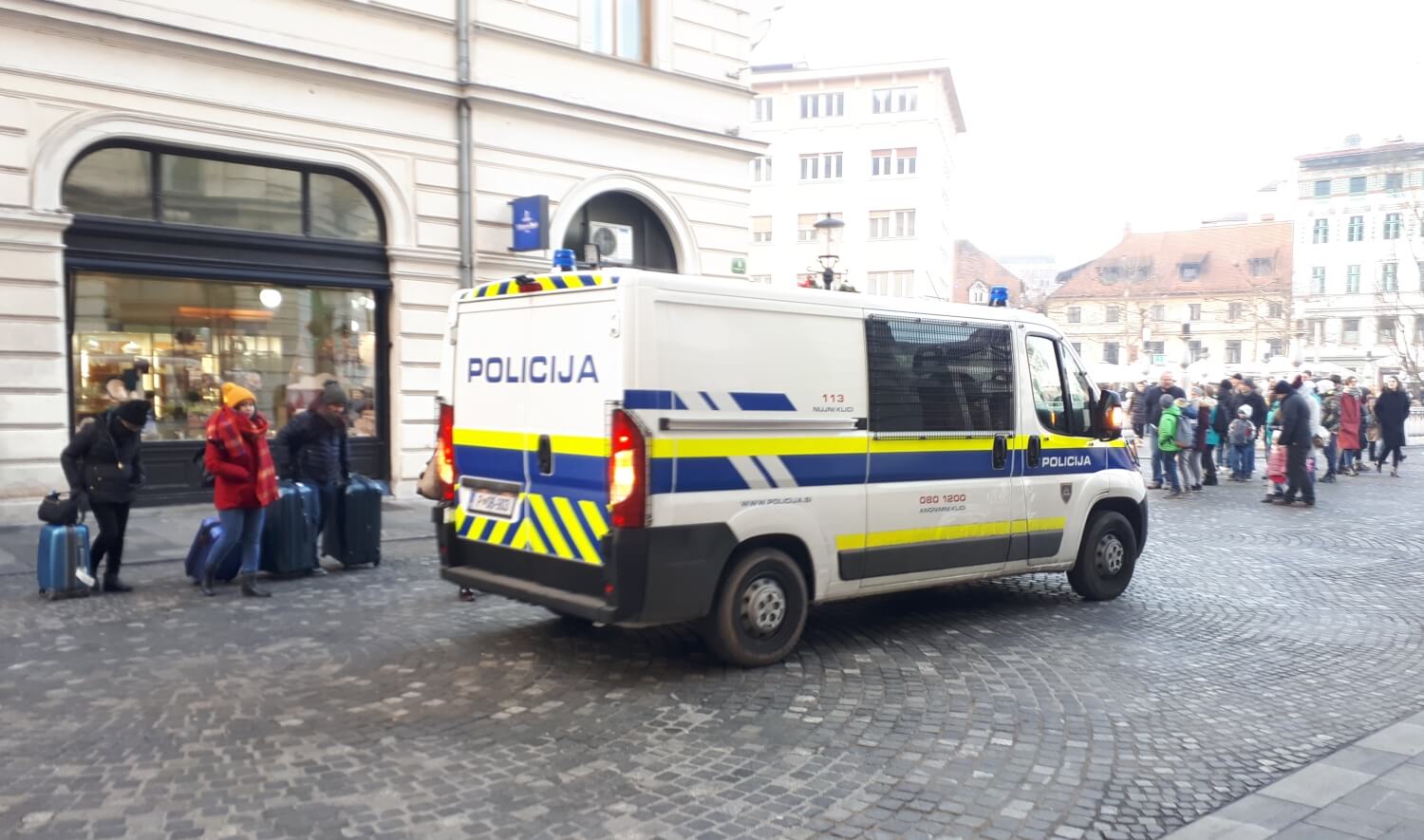
Photo: JL Flanner
The covers and editorials from leading weeklies of the Left and Right for the work-week ending Friday, 07 June 2019
Mladina: Slovenia taking the wrong approach in selection a candidate for EU commissioner
STA, 7 June 2019 - The left-wing weekly Mladina says on Friday that instead of considering how to affect the future of EU politics by selecting a suitable European commissioner candidate, Slovenia is simply discussing who will be its next commissioner and will probably continue underestimating the influence of the post.
The editorial points out that in 2014, the then government made a fool of itself when it nominated Prime Minister Alenka Bratušek to damage her political status and get rid of her by exposing her lack of English language skills and professional knowledge.
The ridicule attempt backfired, with the whole country and not just Bratušek being laughed at by the EU, editor-in-chief Grega Repovž says under the headline “Commissioner”.
Slovenia's political influence was weakened and the second attempt did not amend the situation. The decision to nominate a political newbie Violeta Bulc, who was regarded as the then Prime Minister Cerar's confidant, was similarly absurd.
She tried to navigate the EU waters, but lacked basic Brussels-speak skills of the art of subtext. "During her term, Slovenia recorded a great deal of political losses, from the Commission's attitude toward the arbitration dispute to its never-ending demands for the privatisation of state assets, including the NLB bank, Adria Airways, Fotona.
"All those cases show the actions and decisions of the Commission, which will significantly affect the development and the strength of this country in the long term," says the editorial.
Those incidents have also branded Slovenia as another "nation of some kind of characters", Easterners, which does not grasp the significance of the commissioner post. "A commissioner is a powerful politician, diplomat, who runs a certain sector but also acts in their country's interest at the Commission level in a smart and skilful way."
This unspoken aspect is key to the nomination procedures of the other EU countries. The candidates' professional skills certainly raise their political status, but their international experience and diplomatic skills are even more essential, Mladina points out.
"It's high time Slovenia left the club of countries which don't understand the dimensions of this post. Unfortunately, things are not looking good," concludes the editorial, adding that there is a shortage of suitable candidates.
Reporter: What the EU vote could mean for the Slovenia’s next general election
STA, 3 June 2019 - The right-wing magazine Reporter offers an analysis of the EU election results in the latest editorial, finding that the right bloc is no closer to power than it was a year ago and that the conservatives would have to "cut the Gordian knot" unless they want the left to continue in power.
Under the headline Game of Thrones on the Right editor-in-chief Silvester Šurla finds that the EU vote has not significantly changed the balance of power between the left and right, and that the electorate is sill tipped slightly to the left, although a bit less than in the 2018 general election.
He notes that the Democratic Party (SDS), which won the election convincingly on a joint ticket with the People's Party (SLS), mustered roughly as much of the vote as it did five years ago when it ran on its own.
It was mainly the SLS which benefited from the joint ticket, because Franc Bogovič would not have been re-elected MEP if the party stood on its own, while the joint ticket in a way also benefited the SDS, because otherwise its victory would have been less convincing, writes Šurla.
"The SDS is now trying to convince the public that the joint ticket was an investment in the next general election so that it would be easier, if the SLS returned to parliament, to form a right government.
"However, the speculation that this would be made possible by Marjan Podobnik, risen from the dead after twenty years of political abstinence, is, given his political baggage from the 1990s, a bit far fetched."
Šurla goes on to say that the concept of Spring parties is rather passe in 2019; after the failure of the pro-life GOD party last year, this year it was Bernard Brščič's Homeland League (DOM) which flopped, partly due to SDS leader Janez Janša, which Brščič will not easily forget.
"The state of latent tension" also continues between the SDS and New Slovenia (NSi). For the right losing one MEP term Janša blamed NSi leader Matej Tonin, who rejected the accusation as 'fake news', arguing that a joint NSi/SLS ticked would get two MEPs, as much as the SDS independently, so the right would have ended up with the same tally of seats.
Speculating about the next general election in spring 2022, Šurla is doubtful that the Spring parties formula would work this time, when it did not the last, although he expects Janša to give it one more try with the NSi, SLS and possibly DOM.
Šurla notes that the combination lacks a centrist party like the Virant List which helped Janša form his second government in 2012, or a party that would appeal to the half of the electorate who do not turn out.
"The SDS as it is can obviously not address these voters either. In the finale of each election campaign it is only capable of scrapping as much right voters as possible, but the pool of those is limited," writes Šurla.
Considering the left bloc is ruling out forming a coalition with Janša, he can come to power only if a coalition of akin right parties win a majority in parliament.
"This is not impossible but very hard, considering the structure of the Slovenian electorate, to whom the left adapts better by means of new faces. But the Gordian knot on the right will have to be cut at one point or else they will continue to turn in vicious circles, while the left will rule."
All our posts in this series can be found here, while you can keep up-to-date on Slovenia politics here, and find the daily headlines here
STA, 7 June 2019 - Slovenia has condemned a map published on an official Twitter profile of the Hungarian government that appears to suggest Slovenia and other countries had appropriated Hungarian lands in the aftermath of the 1920 Treaty of Trianon.
The map "does not contribute to the strengthening of the EU values of cooperation and good-neighbourly relations. The EU has emerged to overcome the burdens of the past and hostility among nations," the Slovenian Foreign Ministry said on Twitter.
The reaction comes in response to a Tweet from @abouthungary, a Twitter profile managed by the International Communications Office of the Cabinet Office of Prime Minister Viktor Orban.
The tweet shows a map of Hungary in 1920 and several hands reaching in to grab territory with the caption "2/3 of the country was taken away".
2/3 of the country was taken away https://t.co/ZYKJH78pcm pic.twitter.com/HGngXuvChw
— About Hungary (@abouthungary) June 4, 2019
The tweet was released to mark Hungarian Day of National Unity, commemorating the anniversary of the signing of the Treaty of Trianon, when the Kingdom of Hungary lost 72% of its territory.
Romania, Czechoslovakia, and the Kingdom of Serbs, Croats and Slovenians made big territorial gains at the time, with Slovenia for example getting Prekmurje.
The Hungarian map as well as the Italia irredenta map posted by a Trieste councillor on Facebook a few days ago also drew response from President Borut Pahor, who called for redoubling efforts for respect between nations.

Related: Slovenia Protests After Trieste Councillor Posts Map of Italy Claiming Parts of Slovenia, Croatia
"It is understandable and right that the publication of maps that could be understood as an expression of territorial claims is met with concern and rejection by the democratic public and politics," Pahor was quoted as saying by his office.
"It is due to such attempts that we must make the greater effort to establish best practice of respect and cooperation, both within national frameworks and between them," said Pahor.
"A president I will endeavour for mutual respect, cooperation and understanding to prevail in particular in relations between neighbouring nations and countries, for the benefit of peace and prosperity," he said.
The maps were also criticised by Prime Minister Marjan Šarec, who said on Twitter it was "neither European nor peaceful. It is a knife in the heart of Slovenia."
Šarec also made broader reference to recent revisionist comments by outgoing EU Parliament Antonio Tajani and a motion by a far-right Italian MP to take census of ethnic Slovenians in Italy.
"The question of Hungarian and Italian maps and proposal to census Slovenians is a question for the portion of Slovenian politics that rushed to accept Tajani's 'apology'," he added.
The Hungarian move also drew condemnation from political parties, in particular on the left.
The Social Democrats (SD) and the Left, which said Slovenia had to issue a strong response, described Hungary's move as signalling "territorial designs".
The NSi demanded that the government issue a protest note against what are no longer just provocations but, in the words of MP Jernej Vatovec, "a plan, perhaps even intimidation".
The Democrats (SDS), which have close links to the Hungarian prime minister and his party, said they would not comment on the issue.
All our stories about Hungary are here
Check the date at the top of the page, and you can find all the "morning headlines" stories here. You can also ollow us on Facebook and get all the news in your feed.
A schedule of all the main events involving Slovenia this week can be found here
This summary is provided by the STA:
Slovenia condemns Hungary map
LJUBLJANA/BRESTANICA - Slovenia condemned a map published on an official Twitter profile of the Hungarian government that appears to suggest Slovenia and other countries had appropriated Hungarian lands in the aftermath of the 1920 Treaty of Trianon. The map "does not contribute to the strengthening of the EU values of cooperation and good-neighbourly relations," the Foreign Ministry said on Twitter. President Borut Pahor urged redoubling efforts for respect among nations, while PM Marjan Šarec made a reference to the map in an address to the Slovenian Exiles Day ceremony, saying that Nazism and fascism were making a comeback in Slovenia's neighbourhood. The map was also condemned by most parties.
PM casts doubt on Abanka privatisation
LJUBLJANA - Prime Minister Marjan Šarec has cast doubt on privatisation of Abanka, saying on Twitter that Slovenian Sovereign Holding (SSH) should "seriously reconsider continuing the sale of Abanka. In particular to questionable funds." The tweet came after public broadcaster RTV Slovenija aired a long documentary Thursday about the 2013 bailout, raising questions in particular about the role of the European Commission in ordering that junior creditors of three banks be wiped out. "The practices of the then [European Commission] were highly unusual," Šarec said.
Slovenia must join commissioner game, Bulc says
BRUSSELS, Belgium - EU Transport Commissioner Violeta Bulc urged Slovenia to immediately join the game as the new Commission takes shape, noting that jockeying for positions is already well under way and it is essential to be there from the start. Asked which portfolio Slovenia should target, Bulc said "anything related to infrastructure is strategically very important for Slovenia." Another area of interest to Slovenia is "anything having to do with links with the region" in Slovenia's neighbourhood.
Complaint against fmr C-bank heads alleges they benefited NLB
LJUBLJANA - A criminal complaint filed against the former governor and vice governors of the central bank in the bank bailout investigation alleges the five procured EUR 277.38 million in unlawful assets for NLB bank, shows a facsimile of the document published by Portal Plus, a news portal. The complaint, filed by the National Bureau of Investigation in late-2018, alleges that central bank management knew the actual state of banks balance sheets had not been determined, a condition for the introduction of restructuring measures under the banking act.
Počivalšek discusses cooperation at business forum in Russia
- PETERSBURG, Russia - Economy Minister Zdravko Počivalšek attended the St. Petersburg International Economic Forum (SPIEF). He also met Russian Minister of Trade and Industry Denis Manturov and Alexander N. Shokhin, president of the Russian Union of Industrialists and Entrepreneurs. The meetings focussed on ways to further strengthen economic cooperation. The possibility to help Slovenian companies win new deals in the Russian market was also on the agenda.
Pahor visiting Vienna next week
LJUBLJANA - President Borut Pahor will visit Vienna on 13 June, meeting his counterpart Alexander Van der Bellen and likely also the country's new Chancellor Brigitte Bierlein, as well as Speaker Wolgang Sobotka. A day earlier, Pahor will attend a reception hosted by the Slovenian embassy in Vienna to mark Slovenia's Statehood Day, observed on 25 June.
Prelesnik slated for reappointment as info commissioner
LJUBLJANA - President Borut Pahor sent to parliament a proposal to appoint Mojca Prelesnik Slovenia's information commissioner for a second five-year term. The president had consulted deputy group leaders about the candidate, establishing she enjoyed sufficient support for appointment, which requires a simple majority. Prelesnik's first term runs out on 17 July, so Pahor expects the National Assembly to take a vote on the nomination at June's plenary session.
Slovenia wants EU to be autonomous in digital economy
LUXEMBOURG, Luxembourg - Attending a session of the European Council for Telecommunications, Public Administration Ministry State Secretary Leon Behin said Slovenia wanted the EU to be competitive and more autonomous as it transforms into digital economy. He argued that an ethical digital economy was key to the EU's competitiveness. Behin also met German and Portuguese officials to discuss preparations for EU presidency, announcing the 5G revolution would be a major focuses of Slovenia's presidency in 2021.
Swift Response military exercise under way
CERKLJE OB KRKI - The international exercise Swift Response 2019 got under way in Slovenia, Bulgaria, Croatia and Romania in which allied units from France, Italy, Canada, Germany, the Netherlands, Spain, the UK and US will drill airborne operations and ground support activities. The exercise is running until 22 June. According to the Slovenian Armed Forces, the activities in Slovenia will be centred on the Cerklje ob Krki airbase, which will provide logistic support.
Exports growth outpaced by imports growth in April
LJUBLJANA - Slovenia exported EUR 2.81 billion worth of merchandise in April, an increase of 12.9% on the same month a year ago, while imports surged by 28.4% to EUR 3.09 billion, creating a trade deficit of EUR 278 million. The Statistics Office said this was the highest monthly trade deficit on record. In the first four months of the year Slovenia's exports increased by 10% to EUR 11.04 billion, while imports were up 13.9% to EUR 11.17 billion, with the deficit at EUR 128 million.
Ministry proposes all producers pay for packaging disposal
LJUBLJANA - The Environment Ministry put forward a draft decree on packaging and packaging waste which expands the obligation to pay for packaging disposal to all companies that put packed goods or packaging on the market, instead of just those who put out more than 15 tonnes. The decree, which will be under public consultation until 8 July, says that all producers which put packaged goods or packaging on the market must contribute to the management of all packaging waste generated in Slovenia.
Biennial of Graphic Arts focusing on satire and humour
LJUBLJANA - The 33rd Ljubljana Biennial of Graphic Arts got under way at the International Centre of Graphic Arts and several other venues, with satire and humour as the common thread. Running until 29 September under the title Crack Up - Crack Down, the biennial was curated by the art collective Slavs and Tatars. The festival Grand Prix went to the Brit Hamja Ahsan and his The Aspergistan Referendum, a project encouraging reflection and repair of "broader structures of social exclusion and alienation".
Ljubljana outdoor festival season begins
LJUBLJANA - The outdoor festival season in Ljubljana opened with June in Ljubljana, a series of free events in the centre of the city that will kick off by Giselle performed by the SNG Opera and Ballet Ljubljana. More than thirty events will be held over two weeks starting during the day and culminating with evening shows on Congress Square and multiple other venues in the city centre. The highlights include a concert by the Slovenian Philharmonic Orchestra and a concert by Swedish performer Tami T.
Exoplanet in Hercules constellation to be named in Slovenia
LJUBLJANA - The exoplanet WASP-38b and its star WASP-38 in the Hercules constellation will get their popular names in Slovenia as part of a campaign promoting astronomy to mark the 100th anniversary of the International Astronomical Union. Proposals for the names will be collected by the end of October. Running across the world under the slogan 100 Years Under One Sky this year, the NameExoWorlds campaign in Slovenia will pick a name for the exoplanet and its star located 446 light years from the Earth.
Slovenian women handball team qualify for world championship
CELJE - The Slovenian women's national handball team qualified for the World Handball Championship, to be played in Japan in the autumn, by defeating North Macedonia in a second play-off match last night. After beating North Macedonia in Skopje 33:30 last Sunday, Slovenia followed up the win with a 38:27 beatdown last evening, earning their sixth berth at the women's world handball championships. The team will be looking to improve on their best result at the worlds, the 8th place in Croatia in 2003.
Visiting Ljubljana? Check out what's on this week, while all our stories on Slovenia, from newest to oldest, are here
If you're learning Slovenian then you can find all our dual texts here
While Ljubljana Old Town is charming, as each tourist season goes by there are fewer stores that sell things a resident might actually need, with more practical shops getting replaced by those selling souvenirs, ice creams, high fashion items and so on. Nice to look at, but not much use when you need a pair of jeans, camera, USB cable, screwdriver, baking tray, bicycle or bookshelves.
So where does Ljubljana really shop, work and play? For many folk just a short drive or bus ride (#27) away from the Old Town at BTC City, a vast complex of shopping malls, business centres and entertainment facilities. It’s a place that now sees over 21 million visitors a year, from all over Slovenia and even neighbouring countries (with Croatians in particular coming for brands that are hard to find at home).
In the future I’ll be taking a deeper look at the various things on offer at BTC City, for both residents and tourists, but in this story I’m going to focus on one element that surprised me on a recent visit: the food you can get there. If you haven’t been for a while, or if your trips tend to be punctuated by quick cups of coffee or (in my case) a visit to what I believe is the only Burger King in the country, then you might be surprised at the depth and range of BTC’s current food offering, and how it’s making a serious claim as a food destination in its own right.
A home for ethnic food in Ljubljana
There are now more than 70 food vendors at BTC City, and since 2017 they’ve been marketed together under the label Food Bluz. The venture, which also includes a book produced in collaboration with Dr. Janez Bogataj (free PDF here in Slovene and English), was the first project presented as part of Slovenia’s role as European Region of Gastronomy 2021. However, while a broad range of Slovenian food is available at many of the restaurants, one of the great draws of the BTC’s current food offer is the varied menus from further afield, with Thai, Indian, Chinese, Mexican and more to tempt hungry visitors.
Thus in addition to being a well-established hub for business, commerce and innovation - bitcoins are accepted, and the place is a test ground for electric and autonomous vehicles - BTC City is now a nexus of culinary exploration. On my visit, undertaken with a writer from Croatia and with the excuse of research, I managed to cram in four meals and more drinks in one long day, while gazing longingly at many others.

Pasta from a master. Photo: Paul Bradbury

What's bigger than a Rubirosa? Photo: Paul Bradbury
First up was a trip to diVino, a three-floor place next to Kritalna palača (Crystal Palace), with a mix of customers from the local offices and businesses – which include BMW and Microsoft – as well shoppers and those who, like myself on this particular day, are just out to see what’s newest BTC City. DiVino aims to marry the traditions of Goriška brda with those of the Mediterranean, while keeping up on culinary trends. The man at the centre of it all is Chef Matjaž Cotič. He’s worked in Milan, Nice, Paris, Chicago and Basel and picked up many awards and titles along the way, with the two most appropriate for his current position being Italian Culinary Masterchef and the World Vice-Champion in Preparing Pasta (awarded by Barilla). Guests are thus assured of top quality ingredients, handled with care, and on my visit I enjoyed some fantastic Istrian-style pasta with asparagus, along with some aged beef, cooked rare and seasoned only with salt, pepper and olive oil. This was accompanied by a few glasses of Mare Santo penina, each bottle of which spends some time 20-30m under the sea. The temperature at this depth, along with the actions of the currents, are said to be especially good for the wine, as is the infusion of minerals through the cork. All I can say, since I’m no sommelier, is that it tasted great, and no, it wasn’t salty.

There's an extensive fresh food market at BTC City. Photo: Paul Bradbury

Photo: Paul Bradbury
We then visited the impressive street food market. This is a permanent, open-air affair, a little like Ljubljana’s summertime Open Kitchen, with local and regional delights, as well as Thai and Indian food, and it’s worth browsing first to both see what’s on offer and work up an appetite. Sadly mine was still satisfied from diVino and I had to forgo a curry, but still got a bottle of Singha beer to enjoy the feeling of being somewhere else.

What happens after Tito's gone? Photo: JL Flanner
It was hot day, though, and after a further walk around BTC City, including a visit to (look at) the Adrenaline Park and meet an urban beekeeper whose hives are just behind the bushes, my companion and I were again feeling thirsty and in need of shade, and so ventured to Škrnić LJ (in Tržnica jug). This is a Slovenian restaurant that specialises in in one-pot dishes that can be eaten with a spoon, essentially stews and soups. We originally planned to share just one bottle of beer, but when we saw the names of some of the craft brews on offer – Josip, Broz and Tito – we had to sample all three. The alcohol awoke my appetite, and I ordered a plate of fried liver, gravy with mashed potato that was simple and fantastic.

Liver, onion, mashed potato. Photo: JL Flanner
Food for all tastes at BTC City
Next door to Škrnić LJ is the Hiša Refoška, or House of Refošk, with Refošk being a red wine well-suited to hearty meat dishes. True, I’d finished the liver, but with the beer to encourage me I sampled a glass or two of wine here, made some notes, then moved on, determined not to be distracted by any more food and drink until I’ll I’d at least made an effort to see some of the 100s of stores that BTC City has.
Luckily, just a few steps further into the Tržnica jug I found an unexpected branch of Svilna Pot (“Silk Road”). This is an Asian food store that also operates on Trubarjeva cesta, and is run by the people behind the same street's Osho (selling Thai and Vietnamese food), as well as Bistro SUWON, one of the few, if not only, Korean restaurants in the capital. I stocked up on black label Shin Ramyun spicy ramen, Thai red curry mix, bags of sushi ginger, and some Indian powders and pastes.

Pad Thai and porter. Photo: Kratochwill

Buy enough beer and they'll show you the brewery. I assume that's what happened. Photo: JL Flanner
It’s promoted as “a brewery, pub, inn and (con)fusion restaurant”, and meets all the related criteria. The place, owned by the brothers Marko and Mile Kratochwill, has its own onsite brewery and very extensive and varied menu. We’re talking Slovenian classics alongside burgers, steaks, pastas, salads, seafood and pizzas, with the (con)fusion part of the billing being met by a list of Asian dishes that leans to Thai and Indian. A place with a seat and something for everyone, we enjoyed bottles of pilsner and porter to go with a plate of pad thai, plus – the photos prove, but I can’t remember – a number of other items.

I have no memory of taking this picture. Photo: JL Flanner

Or this one: Photo: JL Flanner
At around this point we decided we needed to avoid anywhere else that had its own brewery, or presented the opportunity for many more hours of research, and so headed back to where we started, Kristalna palača. While we began our culinary adventures in diVino, at the base of the tower, it was now time to head to the top of the tallest building in the country, although with just 20 floors and 89 metres you could be forgiven for thinking otherwise.

The tallest building in Slovenia. Photo: JL Flanner

On a clear day you can see forever. Photo: JL Flanner

Small cakes to end a day of culinary adventure at BTC City. Photo: JL Flanner
While there are stairs, and an annual race up them (Tek a Kristalno palačo), we decided to take the elevator to Crystal Café and enjoy the view with a steady heartbeat. We were lucky with the weather, as it was clear and we could see the Castle and other city landmarks, as well as the mountains and just everything all around into the distance. We got coffee, shared a plate of small cakes and went over our notes for the day.
In short, even though we only managed to eat at four different places we got a good feel for the quality and variety, in terms of cuisine, price and dining style, currently available at BTC City, and with at least 70 other places to try on return visits, along with all the practical shopping and entertainment options on offer (a waterpark, cinemas, theatre and more), I’ll be going there whenever I have an excuse and an appetite.
STA, 7 June 2019 - The outdoor festival season in Ljubljana will open on Friday with June in Ljubljana, a series of free events in the centre of the city that will kick off by Giselle performed by the SNG Opera and Ballet Ljubljana.
More than thirty events will be held over two weeks starting during the day and culminating with evening shows on Congress Square and multiple other venues in the city centre.
Some of the highlights include a concert by the Slovenian Philharmonic Orchestra on 12 June, a circus show on 17 June and a concert by Swedish performer Tami T on 21 June.
In the afternoon and early evening, there will be numerous workshops, theatre and puppet performances, and hands-on activities.
Some days will be thematic, with 14 June dedicated to children's shows 15 June to dance and 17 June to circus.
The full programme (in Slovenian) is available at on the festival's official site.
STA, 7 June 2019 - The 33rd Ljubljana Biennial of Graphic Arts will get under way on Friday, with satire and humour being the common thread of the event. Running until 29 September under the title Crack Up - Crack Down, it is curated by the internationally acclaimed art collective Slavs and Tatars.
Nevenka Šivavec, the director of the International Centre of Graphic Arts (MGLC), which organises the event, has told the STA that the collective has offered itself to curate this time after a successful appearance two years ago.
Šivavec said one of the reasons to select the collective, whose core activities are exhibitions, books, lectures and performances, was that they claimed to be covering an "area east of the former Berlin Wall and west of the Great Wall of China".
This is where the organisers found a connection with the geo-political space which used to be covered by the Ljubljana biennial, she said, adding that Slavs and Tatars were also active in publishing and translation.
According to Šivavec, the collective featuring artists from New York, Berlin, Warsaw and Dubai has been selected also because it has become a thing lately that large exhibitions and biennials invite artists as curators.
Slavs and Tatars were looking for a connection between graphic arts and the present time, finding it where satire and graphic arts meet. This is why the organisers have decided that satire is a good starting point, she said.
"The biennial explores the ways in which graphic language stimulates the emergence of satire as an extremely resilient and topical form of criticism through the use of irony and ridicule," according to the event's website.
Various media will be represented at this year's biennial, which will feature 35 artists from Slovenia, Poland, Ukraine, Georgia, Bulgaria, China, Iran, the UK and the US, who use various graphic languages in their work.
In addition to the historical part, the exhibition will feature works by contemporary artists, interventions by various activists and new media representatives, as well as shows by stand-up comedians and other performers.
The exhibition will take place at nine venues across Ljubljana, including the MGLC, the National and University Library (NUK) and the Švicarija arts centre in Tivoli Park.
An exhibition by the winner of the 32nd biennial, Guatemalan artist and architect Alejandro Paz, will meanwhile be on display in Plečnik House, combining Epicureanism and Slovenia's greatest architect Jože Plečnik.
The event will be accompanied by numerous side shows and a collection of articles by acclaimed experts and academicians. It will open today in Švicarija, when the grand prix will also be conferred.
STA, 6 June 2019 - The government has confirmed a controversial legislative motion under which private primary schools are to get full state funding to teach publicly approved curricula, but what constitutes curricula has been effectively narrowed to the extent that private schools are calling it a betrayal of constitutional commitments.
The amendments to the act on the financing of education implements a 2014 Constitutional Court ruling mandating full rather than 85% state financing of publicly approved curricula at private primaries.
But 100% financing refers only to a narrowly defined mandatory programme, with services such as pre-school or after-school classes, which are otherwise a normal part of daily life at school, not financed at all. Similarly, any curricular content considered as above-standard will be exempted.
The amendments would apply to students who will start school next year, while those currently enrolled would be subject to the financing scheme currently in place: 100% financing of mandatory curriculum and 85% financing of expanded curriculum.
But private schools say that the bill contravenes the landmark Constitutional Court decision since it would affectively reduce financing from 85% to around 65%.
Education Minister Jernej Pikalo said that the proposal was based on the ministry's interpretation of the court's decision that what must be funded was the mandatory programme, and not also the extended programme.
The minister stressed that the primary school act did not define the latter as mandatory, although the state was currently financing it.
Regarding the premise that private schools would not be competitive if they did not provide pre-school or after-school classes, he said that the "network of public schools where all this is organised is available to every parent".
"They meanwhile have every right to enrol their children in a private school," Pikalo said, adding that the state did not want to limit the private initiative in education, "which must be present".
"But every country can decide on their own to what extent it will finance this private initiative and what the entry conditions will be," the minister said at a press conference as he presented the changes.
The centre-right opposition has long been vociferously opposed to the proposal arguing that it actually circumvents the Constitutional Court decision, and even some coalition partners have been reserved.
The Pensioners' Party (DeSUS) said that the motion must not reduce the existing rights of private schools in this respect, while the Modern Centre Party (SMC) will listen to the opinion of the parliamentary legal service.
Brane Golubović, the head of the deputy group of the ruling Marjan Šarec List (LMŠ), said the party believed the minister, adding that "we will examine all remarks from the public debate and make our decisions based on that".
On the other hand, opposition New Slovenia (NSi) president Matej Tonin said on Twitter that the government's proposal actually lowered the financing of private school "to the ridicule of children, parents and the rule of law".
Google Earth Engine is a site that lets you explore how places have changed since 1984 via the magic of satellite images, one for each year and for any place on Earth.
It’s a fun tool, although, as these examples of Ljubljana, Maribor, and Bled show, the physical infrastructure of some of Slovenia’s more famous places hasn’t changed as dramatically as you might expect (press the play symbol to start the animation).
Below: Ljubljana
Below: Maribor
Below: Bled
In contrast, looking at Novo Mesto the change from backwater to industrial powerhouse over the last three decades is quite evident from the air.
Below: Novo mesto
And the same can be seen, on a smaller scale, in the town of Logatec, with much of the change driven by two industrial parks.
Below: Logatec
And if you want to see how fast things have been going in other parts of the world, then check out Shanghai, Dubai, and Las Vegas
Below: Shanghai
Below: Dubai
Below: Las Vegas
You can play around with Google Earth Engine here
STA, 6 June 2019 - Home appliances producer Gorenje will lay off 104 workers, which is fewer than the initially presented figure of 270, the in-house trade union said on Thursday.
Of the 1,481 workers planned to be laid off, 1,377 will be offered a new contract and the rest will be sacked, SKEI Gorenje said as it received the lay-off plan from the management.
Gorenje employs over 4,200 workers in Slovenia and abroad, and is amid reorganisation following last year's takeover by China's Hisense and EUR 37 million in net loss.
The union fears this is just the first step towards more lay-offs, which is in contradiction with Hisense's announcements about production expansion and new hirings.
It also insists that the former Gorenje management should be held responsible for the wrong decisions which had caused the group to sink into the red.
The union said social dialogue in the company was worrying; the management set the amount of the annual holiday allowance unilaterally, even if this is not in line with the collective bargaining agreement, noting the allowance was lower than in 2017.
The union blames such moves on the Slovenian advisers to the Chinese owners, which however risk falling out of favour with the employees.
Some trade unionists have according to SKEI Gorenje already received anonymous threats to be careful what they tell the media.
SKEI Gorenje thus announced it would fight for workers' rights with all means.
The management, on the other hand, said the new contracts had been checked by the trade union and some of its remarks taken into account.
The workers will start getting new contracts on Monday, a process planned to be completed by the end of June.
Earlier this year, Gorneje announced the majority of the planned redundancies would not affect production workers but cleaners, security staff and warehouse workers.
Meant to provide for Gorenje's sustainable growth and development, the reorganisation was said to apply to the entire group not the just the parent company in Velenje.
Gorenje generated almost EUR 1.2 billion in sales revenue last year, a 1.7% drop compared to 2017, finishing the year in the red.


